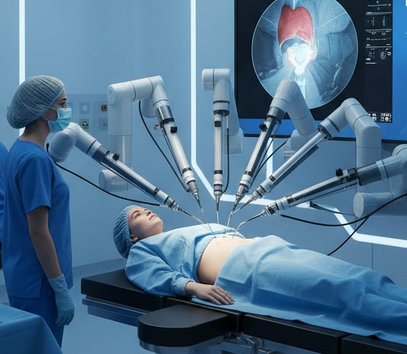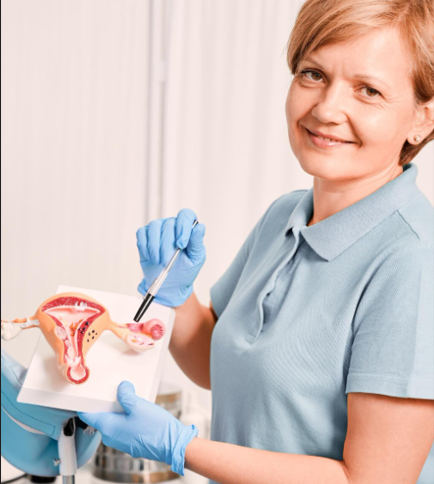Treatment Overview
Urinary Tract Infections (UTIs) are one of the most common infections affecting women worldwide, often causing discomfort, pain, and disruptions to daily life. In Korea, Urinalysis for UTI Detection serves as the first-line diagnostic test used to confirm infection and guide proper treatment. This non-invasive and highly reliable test helps healthcare professionals identify bacterial presence, inflammation, and other abnormalities within the urinary system.
Korean OBGYN clinics and women’s health centers incorporate automated urinalysis analyzers and precision laboratory techniques to ensure rapid, accurate, and detailed results. As part of Korea’s Comprehensive UTI Treatment Program, urinalysis helps in both the diagnosis and monitoring of infection recovery.
Purpose & Benefits
The main purpose of Urinalysis for UTI Detection is to determine whether an infection exists, identify its severity, and evaluate the body’s response to treatment.
Key benefits include:
- Early detection: Confirms UTI presence before complications develop.
- Accurate diagnosis: Detects bacteria, white blood cells, red blood cells, and nitrites that indicate infection.
- Treatment guidance: Helps doctors choose the most effective antibiotic.
- Progress monitoring: Evaluates how well the infection responds to medication.
- Preventive insight: Identifies recurring patterns or underlying causes of infection.
In Korea, urinalysis is often completed within 30 minutes, allowing patients to start antibiotic therapy the same day—minimizing pain and preventing the infection from spreading to the kidneys.
Ideal Candidates
Urinalysis is suitable for:
- Women experiencing painful urination, frequent urination, or urgency.
- Patients with lower abdominal discomfort or burning sensations.
- Women with a history of recurrent UTIs or cystitis.
- Individuals undergoing preventive health screening or annual gynecologic checkups.
- Patients following up on prior UTI treatment to confirm complete recovery.
It’s also recommended for pregnant women, since UTIs during pregnancy can pose risks to both mother and baby.
Possible Risks & Complications
Urinalysis itself is a safe and non-invasive test with no direct risks. However, inaccurate results can occur if the urine sample is not collected properly—such as contamination from skin or vaginal discharge.
To prevent this, Korean clinics follow strict protocols for midstream, clean-catch urine collection, ensuring the reliability of each test result. In some cases, if abnormalities are detected, additional tests such as urine culture or pelvic ultrasound may be performed to determine the underlying cause.
Techniques & Diagnostic Methods Used
Korea’s advanced medical infrastructure ensures that urinalysis is performed with precision and speed. The test typically includes three main parts:
1. Physical Examination:
Checks the urine’s color, clarity, and odor. Cloudy urine or unusual color can indicate infection or blood presence.
2. Chemical Analysis:
Uses dipstick testing and automated analyzers to detect:
- Leukocyte esterase (white blood cells – infection marker)
- Nitrites (produced by certain bacteria)
- Protein and blood (indicators of inflammation or irritation)
- pH levels (acid-base balance in the urine)
3. Microscopic Examination:
Involves examining the urine sample under a microscope to identify bacteria, pus cells, and epithelial cells.
In Korean women’s hospitals, digital urinalysis machines and AI-assisted diagnostic systems are increasingly used to enhance test accuracy and minimize human error.
Recovery & Aftercare
Since urinalysis is a diagnostic procedure, there’s no physical recovery needed. However, follow-up steps depend on the test results:
- If infection is confirmed: Antibiotic therapy begins immediately.
- If infection is severe or recurrent: Additional diagnostic imaging or urine culture may be recommended.
- If results are normal: Further testing may be done to rule out non-infectious causes of symptoms (e.g., interstitial cystitis or gynecologic conditions).
Patients are advised to stay hydrated, complete prescribed medications, and return for a repeat urinalysis after treatment to ensure full recovery.
Results & Longevity
Urinalysis results in Korea are typically available within the same day. The outcomes provide a clear understanding of the urinary system’s current condition, guiding both short-term and long-term management.
Longevity of results:
- If no infection is detected, results confirm a healthy urinary tract.
- If infection is found and treated, the results help prevent recurrence by identifying risk factors.
With Korea’s focus on comprehensive preventive care, women can maintain long-term urinary health through regular testing and consultation.
Urinalysis Process in Korea
Korea is globally recognized for its efficient, patient-oriented diagnostic care. The urinalysis process typically includes:
- Consultation: Symptom review by a gynecologist or urologist.
- Sample Collection: Midstream urine collected under sterile conditions.
- Laboratory Analysis: Automated testing using advanced analyzers.
- Result Interpretation: Doctor explains findings and recommends treatment.
- Treatment & Follow-Up: If infection is confirmed, antibiotics or preventive counseling are provided.
Patients appreciate Korea’s same-day testing and treatment system, which reduces waiting times and improves patient convenience.
Why Korea Is a Top Destination for UTI Diagnosis
Korea’s women’s health clinics are internationally acclaimed for their advanced laboratory technology and integrated diagnostic care.
Unique Korean advantages include:
- Rapid urinalysis results using AI-based digital analyzers.
- Integration of urology and OBGYN expertise for holistic care.
- High diagnostic accuracy through sterile sample collection protocols.
- Multilingual services for international patients.
- Focus on prevention, not just treatment, to ensure long-term wellness.
These features make Korea one of the top destinations for urinary health diagnostics and treatment in Asia.
Cost Range
The cost of Urinalysis for UTI Detection in Korea is affordable and transparent, especially for international patients seeking quality women’s healthcare.
- Basic Urinalysis Test: ₩30,000 – ₩60,000 KRW ($25 – $45 USD)
- Comprehensive Urinalysis + Culture Test: ₩80,000 – ₩150,000 KRW ($60 – $115 USD)
- Full UTI Diagnostic Package (Consultation + Test + Prescription): ₩150,000 – ₩250,000 KRW ($115 – $190 USD)
Costs may vary based on hospital type, testing equipment, and additional imaging or consultation services.
Popular Clinics in Korea
- CHA Gangnam Women’s Clinic, Seoul
- Ewha Womans University Mokdong Hospital (OBGYN & Urology)
- Seoul National University Hospital – Women’s Health Center
- Yonsei Severance Hospital, Sinchon
- Woorisoa Women’s Clinic, Gangnam
- Samsung Medical Center – Urinary Health Department
These institutions are well-known for accurate diagnosis, rapid test results, and patient-centered care for urinary tract infections.




